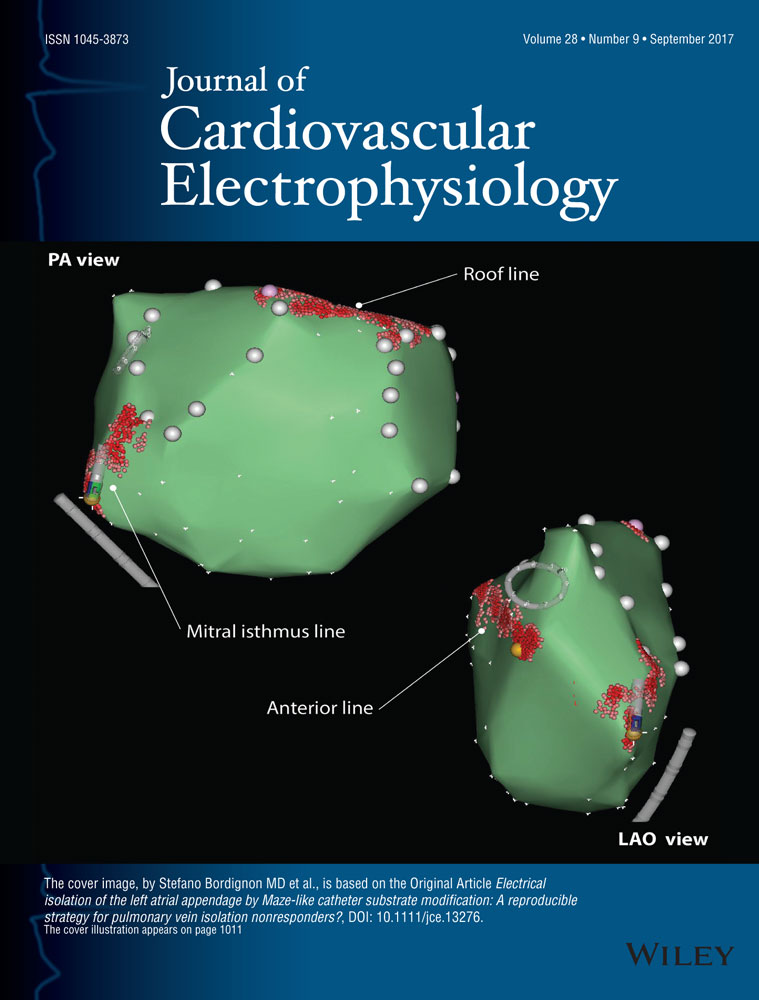Autonomic nervous system modulation and clinical outcome after pulmonary vein isolation using the second-generation cryoballoon
Disclosures: None
Abstract
Background
The intrinsic cardiac autonomic nervous system (ANS) plays a significant role in atrial fibrillation (AF) mechanisms. This study evaluated the incidence and impact of intraprocedural vagal reactions and ANS modulation by pulmonary vein isolation (PVI) using second-generation cryoballoons on outcomes.
Methods
One hundred three paroxysmal AF patients underwent PVI with one 28-mm second-generation balloon. The median follow-up was 15.0 (12.0–18.0) months. ANS modulation was defined as a >20% cycle length decrease on 3-minute resting electrocardiograms at 1, 3, 6, and 12 months postindex procedure relative to baseline if sinus rhythm was maintained.
Results
Marked sinus arrests/bradycardia and atrioventricular block (intraprocedural vagal reaction) occurred in 14 and 2 patients, and all sinus arrest/bradycardia occurred in 44 patients with left superior pulmonary veins (PVs) targeted before right PVs. ANS modulation was identified in 66 of 95 (69.5%) patients, and it persisted 12-month postprocedure in 36 (37.9%) patients. Additional β-blocker administration was required in 9 patients for sinus tachycardia. ANS modulation was similarly observed in patients with and without intraprocedural vagal reactions (P = 0.443). Forty-eight (46.6%) patients experienced early recurrences, and the single procedure success at 12 months was 72.7%. Neither intraprocedural vagal reactions nor ANS modulation predicted AF freedom within or after the blanking period. Thirty-three patients underwent second procedures, and reconnections were detected in 39 of 130 (30.0%) PVs among 23 (69.7%) patients. The incidence of reconnections was similar in patients with and without ANS modulation.
Conclusions
Increased heart rate persisted in 37.9% of patients even at 12-month post-second-generation cryoballoon PVI. Neither intraprocedural vagal reactions nor increased heart rate predicted a single procedure clinical outcome.




